Hey NCAA, Nix Those Backboards!
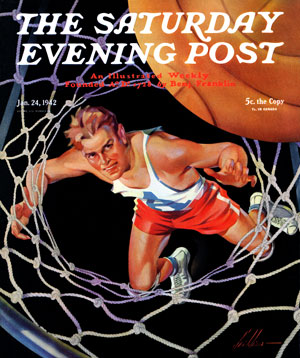
Ski Weld
January 24, 1942
Every sport has fans who think their game has gone sharply downhill over time. Baseball, football, hockey, even horse racing — whatever their game, they’ll tell you it used to be a lot better. In the old days, the sport was a contest of skill, they’ll say, not luck or brute force. Athletes in those idyllic days were faster, smarter, or nobler. (Sports, of course, aren’t the only things that have degenerated over time. The same is said about movies, restaurants, rock music, gas stations, Cracker Jack prizes, and — while we’re on the subject — people in general.)
But even in the Good Old Days, there were purists who looked further back to the Even Better Old Days.
In 1940 Stanley Frank, for example, complained in The Saturday Evening Post that college basketball was no longer played with skill or intelligence: “The big idea is to barge down the court in harum-scarum fashion, let someone unload a wild shot and, if it fails, have one of those 6-foot, 6-inch human skyscrapers — standard equipment for every top-notch team —… grab the rebound and dunk the ball through the hoop.”
To see how the game should be played, he wrote, you needed to look back 14 years. Back in 1926, basketball was a game of skill. In those days, college teams rarely scored more than 20 points. Now, he sputtered, Long Island U was averaging 55 points a game. Fans couldn’t even keep a box score for a basketball game anymore. While jotting down the last point scored, you’d probably miss another basket. “Comment to your neighbor on a good play [and] one of the athletes will bring down the house behind your back with a more stirring piece of heroics.”
Basketball was becoming too intense, Frank griped on. When Centenary College defeated Loyola of New Orleans, 78 to 72, “the sight and sound of so much furious activity were too much for two customers. They fainted dead away.”
This feverish pace of scoring had to be stopped before the game was ruined. Fortunately, the coach of Columbia University had an idea how it could be done: Take away the backboards.
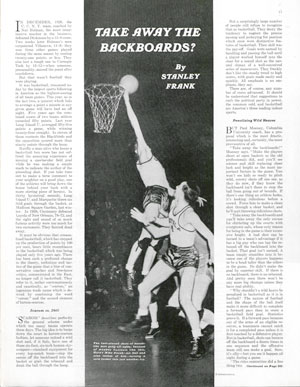
“Make the players shoot at open baskets as the old professionals did, and you’ll see science and skill replacing sheer luck and height as the most important factors in the game,” said Coach Paul Mooney. “You won’t see kids so ready to pitch wild, screwy shots off one ear, as they do now, if they know the backboard isn’t there to stop the ball from going out of bounds.”
The backboard wasn’t originally meant to play a role in scoring. When Dr. James Naismith invented the game 120 years ago, he simply nailed a peach basket to the edge of a gymnasium balcony. A backboard made of chicken wire was only added to prevent balcony spectators from reaching down and blocking shots. When players saw how easily the wire mesh bent, wooden backboards were introduced. Players soon realized they could bank shots off the solid backboard. Later, fans sitting behind the backboards at Indiana University complained that it blocked their view, and the glass backboard was introduced.
The game had been continually evolving since it was introduced. Nearly every aspect of the sport’s equipment and regulations had been altered since its invention in 1891. And not all fans agreed that the changes had resulted in a better game.
Stanley Frank had several criticisms of 1940 basketball, but he believed removing the backboards would help return basketball to its former glory. Scores would drop to pre-1940 levels, and the game would lose its annoyingly frantic pace. It would be, once again, a game of skill.
What he didn’t recognize is that skill alone probably wouldn’t draw immense crowds to college basketball games. Watchmaking is a skill, but no one’s ever sold tickets to see it.
Classic Covers: Women in Sports in the 1900s
Woman With Basketball by Carol Aus
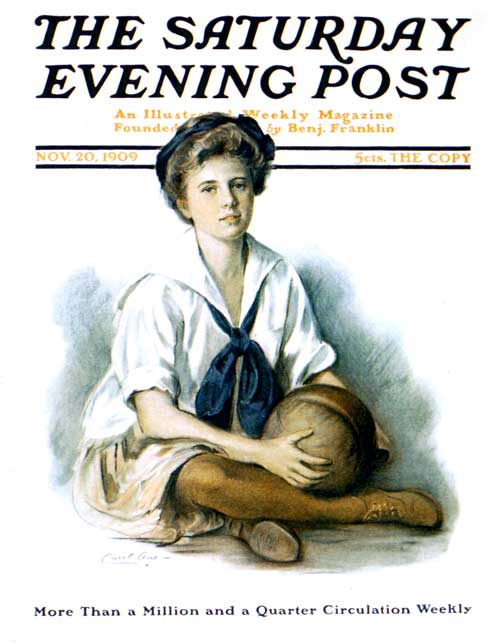
Dr. James Naismith is credited with inventing basketball in 1891, and apparently it didn’t take long for the ladies to try their hand at the sport. A Norwegian artist named Carol Aus (1868-1934), about whom little is known, painted this young player for a 1909 Post cover.
Woman Playing Tennis by George Brehm
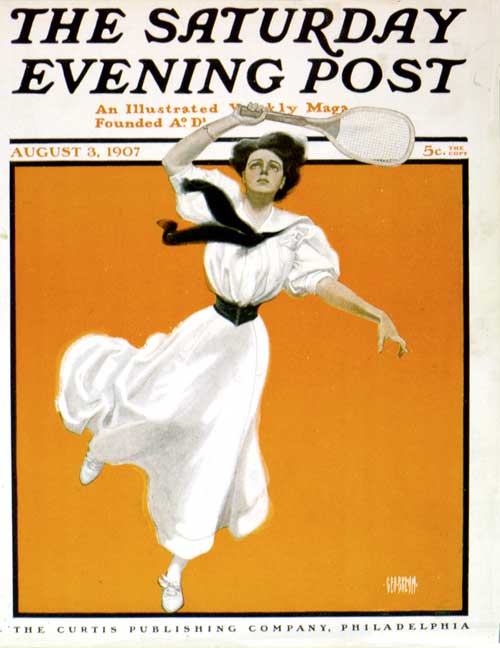
We have plenty of cover art showing a pretty lady posing with a tennis racket or other sports equipment, but an action shot like this tennis player makes a person wonder how the artist did it. A person might also wonder how the lady was so active in a long skirt. This is from 1907.
Lady Fishing by Harrison Fisher
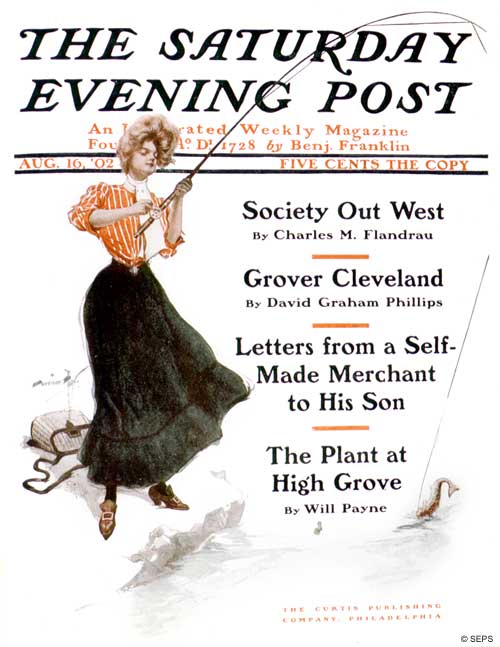
We have dozens of covers depicting the art of fishing, the first of which was Grover Cleveland fishing in 1901. The second, in 1902, was of a lady reeling one in! Harrison Fisher was a big name in Post covers, doing nearly 80 between 1900 and 1915.
The Finals and Alice Gray by Pete Fountain
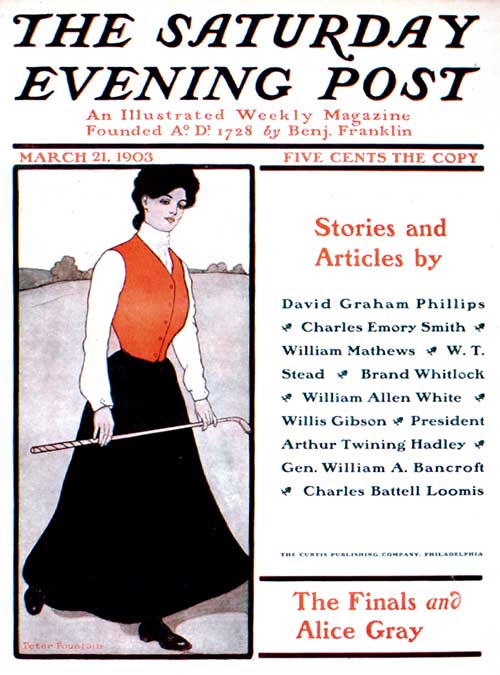
We have numerous depictions of the great game of golf, also. This is one of the earliest, from 1903. Maybe they couldn’t vote, but women could certainly golf…and fish, hunt, play tennis, basketball and baseball.
Woman Archer by J.J. Gould
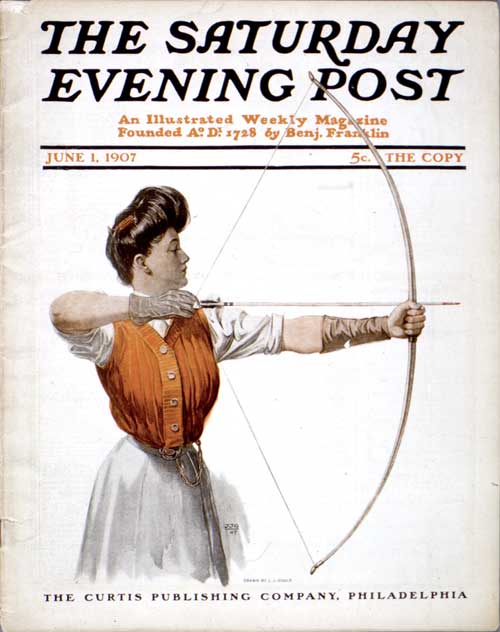
This is another action painting. Early Post artist J.J. Gould went for verisimilitude in this one from 1907. The lady looks like she knows what she’s doing.
Woman on Horseback by Philip R. Goodwin
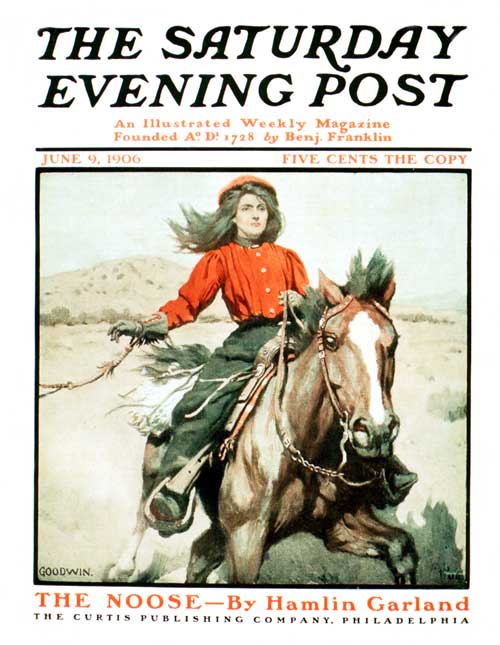
Hundreds of covers depict a lady reading, holding flowers or a fan, or simply looking lovely in a beautiful gown. This 1906 cover shows many of the fair sex were made of sterner stuff.